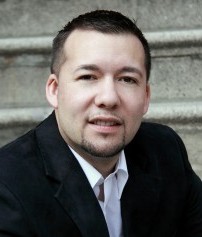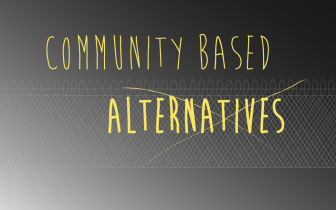 In the early 1990s, Princeton criminologist John DiIulio penned the following words about urban youth:
In the early 1990s, Princeton criminologist John DiIulio penned the following words about urban youth:
“America is now home to thickening ranks of juvenile ‘super-predators’ – radically impulsive, brutally remorseless youngsters, including ever more pre-teenage boys, who murder, assault, rape, rob, burglarize, deal deadly drugs, join gun-toting gangs and create serious communal disorders. They do not fear the stigma of arrest, the pains of imprisonment or the pangs of conscience … At core the problem is that most inner-city children grow up surrounded by teenagers and adults who are themselves deviant, delinquent and criminal.”
His dire warning sparked a rush to incarcerate youth of color in high poverty urban neighborhoods. Soon after DiIulio’s thesis, nearly every state in the country enacted legislation to make it easier to arrest, prosecute and imprison youth. The number of youth charged as adults dramatically increased, as did the number of juvenile prisons built with newly allocated federal dollars redirected from prevention programs.

Katy McCarthy / JJIE
More information about community-based alternatives at the Juvenile Justice Resource Hub.
His prediction proved false. Around the same time that DiIulio’s superpredator hypothesis attracted widespread attention, juvenile crime began to fall. Today, juvenile crime has fallen to its lowest point in 30 years. Yet America’s addiction to incarceration continues as we continue to arrest, prosecute and imprison young people who look nothing like the “brutally remorseless youngsters” DiIulio warned us about.
At the heart of DiIulio’s analysis was a racially tinged and deficit focused view of urban neighborhoods, which indicts entire “inner-city” communities as inherently “deviant, delinquent, and criminal.” If such were in fact the case, then removing youth from their communities would be the only sensible way to save them from themselves, their peers and their families. For several decades, juvenile justice policymakers followed this logic, incarcerating youth in prison facilities far from home.
DiIulio and his followers were blind to the strengths in young people of color, their families and their neighborhoods. They could not see young people’s talents, the love their families had for them and the many community resources that remained even in the most poverty-stricken neighborhoods. They could not imagine that community resources could be marshaled to keep young people – even those in conflict with the law – safely at home.
A new study by the Youth Advocate Programs Policy and Advocacy Center (YAP) shows that it is indeed possible to keep youth Safely Home, as the report is titled. The report documents how thousands of youth served by YAP have been served safely at home through community-based programs instead of incarceration.
Safely Home finds that more than 8 out of 10 youth remained arrest free and 9 out of 10 were at home after completing their community-based program, at a cost that is a fraction of what it would have cost to incarcerate these youth. Moreover, the report highlights how youth are best served through programs that build on youth strengths, engage their family members and connect them to local community supports.
This strengths-based perspective is needed as we seek to figure out how to deal with youthful misbehavior in a post-incarceration paradigm.
DiIulio had drastic change of heart just several years after his initial thesis, when he began visiting the same communities that he initially written off as beyond redemption. In the inner-city neighborhoods of Philadelphia and Boston he met grassroots faith and neighborhood youth workers, often in African-American and Latino churches, who were diligently laboring to nurture and hold accountable even the highest-risk youth and achieving transformative results.
In a 2001 interview with the New York Times, DiIulio repented of his earlier call for building more juvenile prisons, saying: “If I knew then what I know now, I would have shouted for prevention of crimes.” He would go on to work for the White Office of Faith-Based Initiatives in an effort to repair the damage caused by his earlier views.
As a minister and executive director of a community-based organization in one of these low-income communities, my prayer is that we would have the same spirit of humility to recognize and build on the strengths of youth of color, their families and their communities as we seek to rebuild neighborhoods devastated by incarceration.
Rev. Rubén Austria is the founder and Executive Director of Community Connections for Youth, a Bronx-based non-profit organization whose mission is to empower grassroots faith and neighborhood organizations to develop effective community-driven alternatives to incarceration for youth. In full disclosure, he is on the Advisory Board for Youth Advocates Program (YAP), the organization that released the study, and CCFY partners with YAP on a program in the South Bronx.

Pingback: EEUU (Columna de opinión): Report Finds Incarceration Doesn’t Work, Community Engagement Does | NotiProyecto B